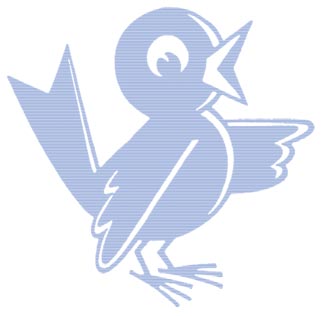 Peabody alumni may be surprised to learn that the college is using new ways to stay in touch with graduates day to day, via new social media applications, such as Facebook, VUconnect, Twitter and YouTube. How is this tangle of newfangled social networking terms changing the face of alumni communications?
Peabody alumni may be surprised to learn that the college is using new ways to stay in touch with graduates day to day, via new social media applications, such as Facebook, VUconnect, Twitter and YouTube. How is this tangle of newfangled social networking terms changing the face of alumni communications?
“The theme running through a lot of social media is the idea of a conversation,” says Melanie Moran, associate director of the Vanderbilt News Service and director of Web communications at Vanderbilt. “Professional communication no longer exists in the form of an organization putting out news and just expecting people to eat it up. It is now two-way; audiences expect to be able to share their thoughts.
“Every student, faculty member, staff and neighbor of the university now can report about what we’re doing,” Moran says. “Conversations about Vanderbilt are taking place all the time online, which is different from the past, because these conversations are viewable, searchable, dynamic and ongoing.”
 Tweet, tweet
Tweet, tweet
Associate Dean for Professional Education and External Relations Timothy Caboni sees the power of social media in its ability to “provide us with opportunities to develop deeper relationships with our alumni and friends that otherwise would be impossible or highly unlikely.”
Current and former students are a large part of the more than 1,300 people following Caboni’s Twitter feed, which he uses to maintain relationships and share information among professional colleagues.
“I think it is remarkable that my former students are able to share with me—in real time—the things they are experiencing in their administrative positions at colleges and universities across the nation. It is humbling and rewarding to watch them make use of what they learned during their time here,” Caboni says.
“For prospective and current students who follow me on Twitter, I think it gives them a unique window into the daily life of an academic administrator and faculty member. Additionally, it demonstrates in a tangible way what is so unique about faculty/student interactions at Peabody and what makes us different from our competitor institutions.
“In addition to sharing with students articles I come across in my daily reading that I might not otherwise bring into the classroom,” Caboni says, “Twitter enables me to interact informally with advancement and fundraising practitioners at many other institutions who can use the resources I reference.”
 Open face
Open face
Once a student-oriented social networking site, Facebook is now open to everyone. The site claims to have more than 250 million active users and is the most active social networking site. The fastest growing group of Facebook users is people 35 years and older.
The Peabody Facebook page was launched in January and is a place for communicating news stories and events to alumni, current students and anyone interested in following Peabody. Alumni can post responses or simply become a fan and receive updates.
 Later this year, Peabody Career Development plans to offer special networking pages for alumni of specific programs such as organizational leadership and human resource development on LinkedIn, a social media site for professionals. These groups are planned to be a place where current students can contact and interact with program alumni.
Later this year, Peabody Career Development plans to offer special networking pages for alumni of specific programs such as organizational leadership and human resource development on LinkedIn, a social media site for professionals. These groups are planned to be a place where current students can contact and interact with program alumni.
“We believe that employers and Vanderbilt alumni want to connect with the well-educated graduate students of Peabody, and the LinkedIn groups are a central part of our strategy to get them together,” says Jeff Henley, director of Peabody Career Development.
Web users are not only interested in making connections, of course. Many want access to the intellectual content generated by colleges and universities. Alumni long used to attending lectures or panel discussions during reunions or at Homecoming can now access presentations by faculty or guest speakers whenever they wish.
 Vanderbilt was one of the first universities in the nation to launch its own branded YouTube channel to present videos of significant events, and Peabody College has a section for its own faculty and guest speaker videos within the channel.
Vanderbilt was one of the first universities in the nation to launch its own branded YouTube channel to present videos of significant events, and Peabody College has a section for its own faculty and guest speaker videos within the channel.
“YouTube has been really fantastic for getting our content out to a broad audience,” Moran says. “People share what they find with friends and colleagues.
“YouTube is easy to use, free, and it enables us to be creative in producing videos about things that are happening on campus, telling stories that might not otherwise be told.”
An avid user of social media, Caboni acknowledges that it has both benefits and limits. “As the audience for Peabody’s social media presence grows, we’ll be trying more ways to increase interactions and outreach with alumni,” he says. “But we don’t think it will ever take the place of tailgating at Homecoming.”